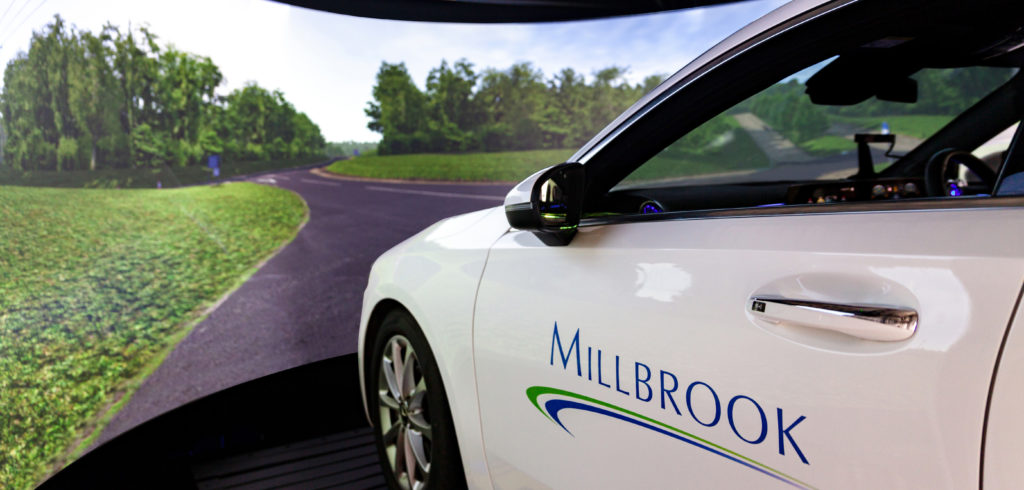The Millbrook test facility in the UK says that it has recently specified, built and commissioned a simulation suite as part of the 5G testbed project being run at its track.
According to the company, the simulation environment is an integrated vehicle-in-the-loop (VIL) ecosystem that combines its virtual proving ground with highly detailed vehicle modeling software.
Complementary to the facility’s existing driver-in-the-loop system and biometric sensors, the VIL simulation interacts with high fidelity track models, with the simulation suite utilizing high-speed fiber, 4G LTE and 5G private networks, as well as a modular simulation architecture.
Models of a vehicle and its actuators, sensors, radar and camera systems can be provided, or customers’ own digital models and hardware can be brought into the simulation. The company noted that a selection of generic vehicle models are also available for demonstrations and preliminary testing.
The intent behind development of the VIL system is to enable support for customers’ vehicle development within virtual and blended environments. According to Millbrook, the simulator can be used for designing, developing and testing advanced driver assistance systems (ADAS), connected and autonomous vehicles (CAVs), and conventional vehicles. It can also be used to determine vehicle road safety, develop artificial intelligence, test infotainment packages and validate intelligent energy systems on electric powertrains for battery and thermal management.
Furthermore, the company says it can provide a flexible, connected environment to cover offline, real-time and hardware-in-the-loop (HIL) simulations for real-world correlation. The digital twin of its proving ground provides simulations of vehicle dynamics, terrain, traffic, sensors, networks and connectivity. It uses real radar and camera sensors, or complete onboard sensors with static vehicles.
Peter Stoker, chief engineer for connected and autonomous vehicles at Millbrook, explained, “The addition of our new VIL simulator means we can now put real vehicles into virtual environments. Our 5G capability provides excellent connectivity on-site and allows manufacturers to measure vehicle performance in a more controlled, simulated environment, before heading out on our test tracks. Actual track results can be replayed via the simulator and weather and traffic can be safely changed, while users interact with real sensors.”


